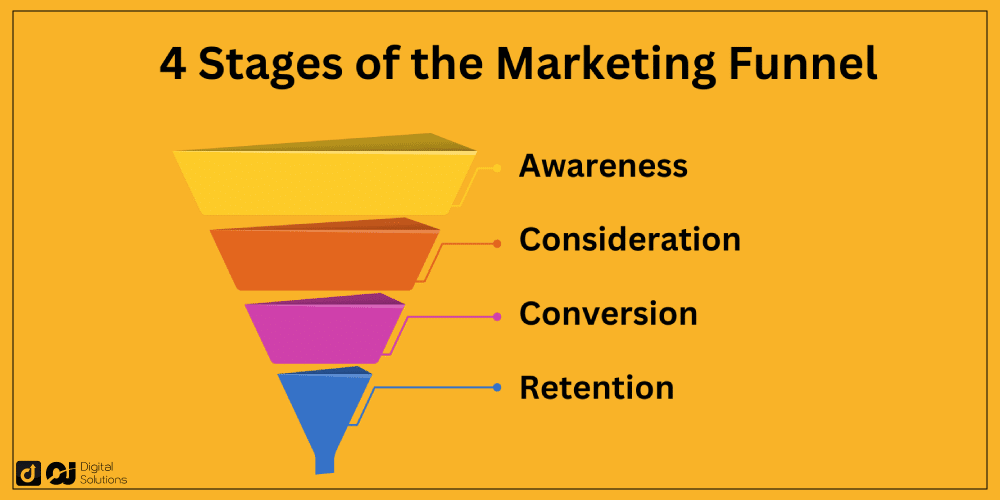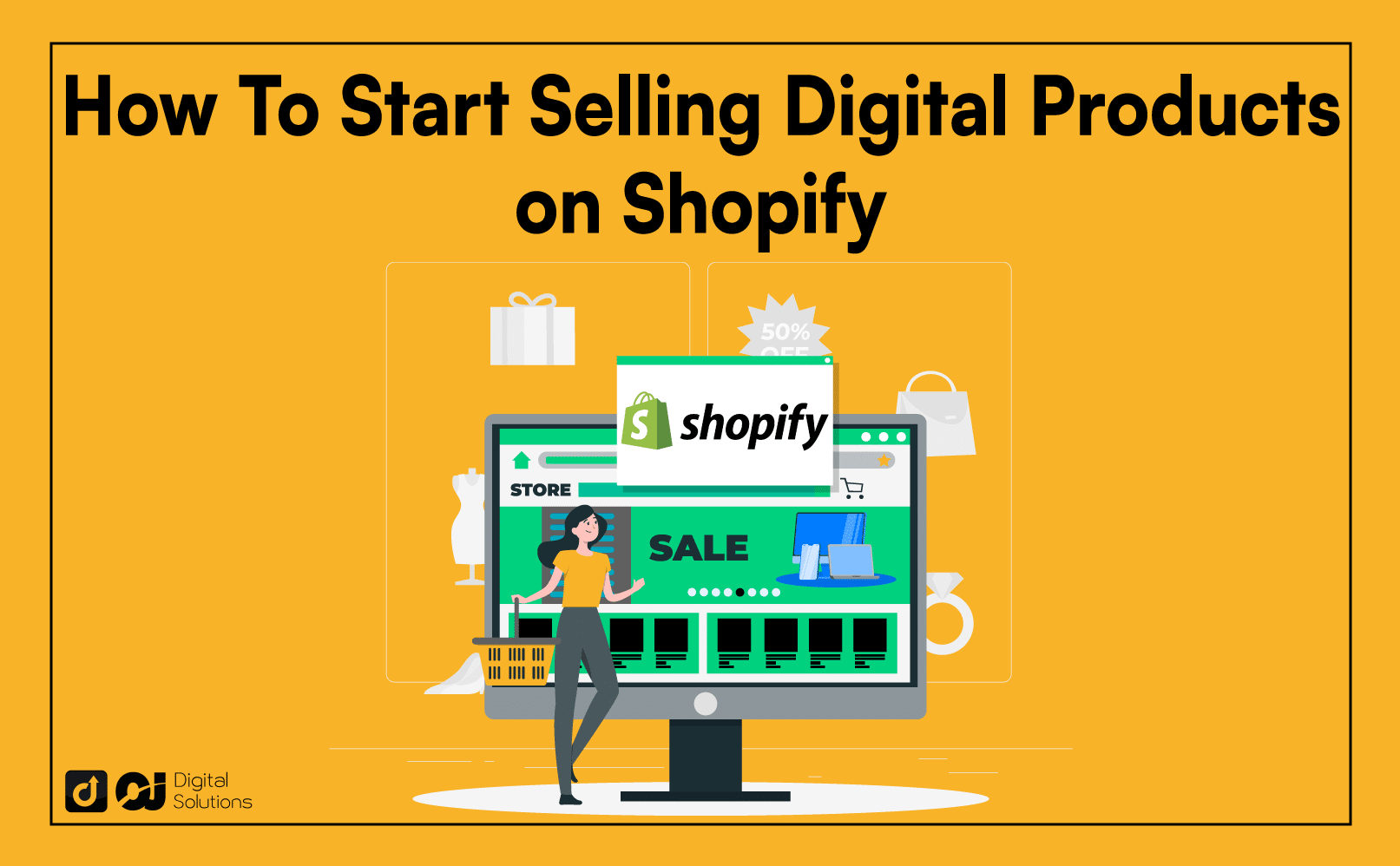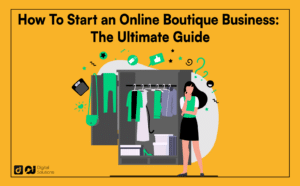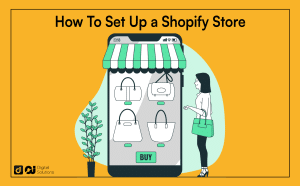Want to start selling digital products on Shopify? The high-profit margins, low production costs of digital products, and Shopify’s limitless possibilities, it can be a very lucrative source of income.
The question is: How do you start? I’m here to help.
I wrote this article to teach you how to sell digital products on Shopify. I’ll explore the ins and outs of setting up your Shopify store and selling the right digital products. I’ll also explain how to optimize your shop and market your products.
Let’s begin.
Selling Digital Products on Shopify: Your Step-By-Step Guide
It’s popular among entrepreneurs to use Shopify for digital products because it’s easy to set up a Shopify store.
Here’s how to sell digital downloads on Shopify.
1. Sign Up for a Free Trial on Shopify.
The trial period will allow you to explore the platform’s features and functionalities before committing to a plan. You can set up your online store and add digital products, but you must pay to continue using it beyond the free trial period.
To start with the free trial, visit Shopify’s website and click the Start Free Trial button in the top right corner.

Shopify will guide you through some questions to learn more about you and your business. It will then prompt you to set up your store and prepare it.
2. Decide What Digital Product To Sell.
Before setting up your Shopify store, decide what you will sell. With all the possibilities, it can be overwhelming to come up with ideas.
I’ll give you some tips:
Assess your skills, knowledge, and expertise.
Determine how you can deliver value to your audience through your product offerings.
Conduct market research to see the demand.
Analyze your target audience’s needs, preferences, and interests.
Consider your budget and available time for creating and marketing your product.
Review and comply with Shopify’s policies and guidelines.
What Products Can You Sell on Shopify?
Can you sell digital products on Shopify? Yes, and you can sell digital goods alongside physical goods.
Shopify supports a wide range of digital products, making it a versatile platform for sellers. Here are some popular digital products to sell on Shopify:

Ebooks – Share your knowledge or creative writing through digital books.
Software and applications – Offer digital software solutions, apps, or plugins for various purposes.
Online courses and tutorials – Share your expertise by creating video or text-based online courses.
Music and audio files – Sell digital music albums, soundtracks, or audio recordings.
Graphic designs and digital templates – Offer digital assets like templates, logos, and graphics.
Stock photography – Showcase and sell digital copies of your photographs to serve as stock photos.
Digital artwork – Sell your art as downloadable prints, so you don’t have to do the printing yourself.
Videos and video courses – Create and sell video content, such as tutorials or video courses.
Fonts and digital assets – Provide designers and creatives with unique fonts or digital assets.
Mobile app downloads – Sell mobile applications for smartphones and tablets.
Others – The possibilities of digital content are limitless. You can also sell email templates, websites, digital stickers, and more.
Create Your Digital Product.
Once you’ve decided on some products, it is time to create it.
Creating a digital product involves several steps, depending on the type you want to offer. Here are the important steps on how to make a digital product:
Do Market Research.
Conduct market research to understand your target audience’s needs, interests, and preferences. Create products to fill gaps in the market and improve your competitors’ offerings.Create the Content.
This step involves writing the content for an ebook or course, designing graphics or templates, recording videos, composing music, or developing software.
Choose the appropriate software, like Canva for graphic design or Vellum for eBooks.Format the File Properly.
Pick a format that is best for distributing your chosen product. For example, if you’re creating an ebook, convert it to a commonly used format like PDF or ePub.Cover the Legal Bases.
If applicable, secure the necessary licenses and copyrights for your digital product. Ensure you have the right to use any third-party assets, such as graphics, images, or music. Alternatively, you can use free content or ensure everything your file contains is your own work.Decide on the Delivery Method.
You can use Shopify’s built-in digital download feature or integrate with third-party apps for the best file protection features.
3. Set Up Your Shopify Store.
Follow these steps to get your digital product business up and running.
Choose the Right Theme.

Shopify provides access to a vast selection of free and paid themes. It has options for various niches and industries, which can be overwhelming to explore.
Take the time to decide. Select a visually appealing, user-friendly theme that aligns with your brand and product.
Create Your Store Pages.
Build essential pages for your digital product store to provide necessary information to your visitors. Common pages include:
Home – This page introduces your brand and may feature some best-selling digital products.
About Us – This should tell your brand’s story and mission to create a personal connection with your audience.
Contact – Provide contact information or a contact form for customers to reach you with inquiries or concerns.
Product Pages – Create separate pages for each digital product you’re selling. Include engaging product descriptions, high-quality images, and additional details or specifications.
Create Your Navigation Menus.

Organize your store’s navigation to make it easy for customers to find what they want. Create clear and intuitive menus that lead visitors to your product pages, about us section, and any other essential pages.
Add a Custom Domain Name for Your Store.
Having a custom domain name makes your shop look more professional. The custom URL also enhances brand recognition and credibility.

You can choose your shop’s URL by navigating to the Domains tab on your Shopify dashboard.
You can buy a new domain or connect an existing one on this page.
4. Add an App for Selling Digital Products on Shopify.
To sell digital products online, you need the right tools to help you list and deliver your goods securely and quickly.
Visit the Shopify App Store to see various digital download apps tailored for seamless digital product delivery. Here are some popular choices.

SendOwl – 4.4 rating
This digital downloads app supports various digital goods, including ebooks, downloadable files, subscriptions, keys, ebooks, audio, and more.FetchApp – 4.4 rating
This is another digital products app that automates the delivery of digital products and integrates with popular payment gateways. It can also receive orders from multiple selling channels.Sellkite – 4.9 rating
This app offers unlimited digital downloads and custom files for every order. It has a free app version but with limited Shopify products.
5. Add and Optimize Your Digital Products.
Add your products on Shopify and optimize their pages to increase your conversion rate.
Here’s how to add digital products to Shopify (and optimize them).
Perform Keyword Research.
You must conduct keyword research to find search terms your customers are more likely to use.
You can use tools like SEMRush, Ahrefs, or even Google Trends.

Upload High-Quality Images.
Include high-resolution images or graphics that accurately represent your digital products. Clear and appealing visuals significantly influence a customer’s decision in your favor.
Optimize for the Search Engine.
Optimize your listings to increase their visibility on the search engine results page. Here are some tips:
Product Descriptions
Write clear and compelling product descriptions highlighting your digital products’ benefits and features. Use persuasive language to entice potential customers.Keywords
Insert keywords across your online store, from the metadata to product descriptions.File Formats
Ensure your digital products are in popular and accessible file formats for different devices and platforms.Delivery Instructions
Provide clear instructions for customers accessing and downloading their purchased digital products. Make the process simple and user-friendly.
Set Competitive Pricing.
Determine a competitive price by studying your competitors and analyzing the market demand for your products.
Remember, you don’t want to set prices that are too low. Doing so might make potential customers mistakenly think your products have low quality.
Conversely, you don’t want to price higher than they want.
6. Promote Your New Shopify Store.
When you sell online with Shopify, you must make significant efforts to get the word out.
You need effective promotion is key to attracting potential customers and generating sales. Here are some tips on how to promote your Shopify store.
Understand Your Audience.
Before you start any marketing efforts, conduct thorough market research to identify your potential customers. In general, you need the following information:
Who they are
What they’re interested in
Where they hang out online
Knowing your audience will help you tailor your marketing strategies to reach them effectively.
Create a Marketing Funnel.
A marketing funnel is a step-by-step process that guides potential buyers from awareness to purchase. It involves multiple stages, each with a specific goal.
Here’s a quick look at the typical marketing funnel stages.

Awareness
Attract potential customers’ attention and make them aware of your Shopify store and digital products. Use social media, content marketing, and SEO to increase visibility.To capture the interest of potential customers, provide valuable content. Offer free resources or trials to encourage engagement.
Consideration
Present your digital products as the solution to your audience’s needs or problems. Highlight the benefits and unique selling points of your offerings.You can also offer special deals, discounts, or limited-time offers to encourage potential customers to take action and purchase.
Conversion
Your ultimate goal is turning visitors into paying customers by encouraging them to complete purchases.Retention
Once a customer makes a purchase, focus on providing excellent customer service and offering incentives to encourage repeat purchases and loyalty.
Explore Different Promotion Methods.
You must determine where your customers are and establish your presence there. Here are some effective marketing channels:
Social Media
Create a presence on social media platforms like Facebook, Instagram, Twitter, and LinkedIn to connect with your target audience. With a social media account, you can share engaging content, product updates, and promotions to build a loyal following.You can create an account and utilize specific features, like Facebook Groups, Pinterest Boards, etc.
Social Media Ads
Consider running paid advertisements on social media to reach a larger audience and drive targeted traffic to your store.Online Marketplaces
In addition to your Shopify ecommerce platform, explore other online marketplaces like Amazon or Etsy to expand your reach and tap into existing customer bases.Email Marketing
Build an email list by offering valuable content or incentives in exchange for visitors’ email addresses. Use email marketing to nurture leads, send promotions, and keep customers informed about new products or offers.Search Engine Optimization (SEO)
Optimize your website and product pages for search engines to improve your organic rankings. Use short- and long-tail keywords to sprinkle into the webpage’s metadata and content.
7. Choose the Right Shopify Plan.
Shopify offers several plan options, each with different features and pricing.
Here’s a quick overview.
| Basic | Shopify | Advanced | |
|---|---|---|---|
| Monthly Fee | $25 monthly | $65 monthly | $399 monthly |
| Annual Fee (paid annually) | $19 monthly | $49 monthly | $299 monthly |
| Reports | Basic | Professional | Custom report builder |
| Staff Accounts | 2 | 5 | 15 |
| Transaction Fees | 2.0% | 1.0% | 0.5% |
1. Basic Shopify
This plan is the most affordable option, making it suitable for those just starting their business. It has all the features you need to set up and run a basic online store, such as:
Free SSL certificates
Abandoned cart recovery
Discount codes
Marketing automation
Ecommerce automation
2. Shopify
The Shopify plan offers additional features and benefits.
This plan is ideal for growing businesses with moderate sales volume and needing more advanced features.
3. Advanced Shopify
The Advanced plan is the most feature-rich and powerful option for larger businesses and high-volume sellers.
4. Shopify Plus

Shopify also offers an Enterprise-level plan: Shopify Plus.
This plan is best for large-scale businesses with complex needs and high levels of customization.
How To Choose the Right Plan for You
Carefully assess your business’s current and future requirements while working within your budget.
As your business grows, you can always upgrade to a higher plan to access more features and support. Conversely, if your needs are more basic, you can switch to a lower plan to reduce costs.
The right Shopify plan can help you provide a seamless customer shopping experience and manage your online business effectively. Take the time to compare the features of each plan, and choose the one that aligns best with your business goals.
8. Monitor Your Performance and Optimize.
How do you know if your strategies are working and you are hitting your goals?
You must monitor your shop’s performance and continuously optimize it to grow your business.
Here are some ways you can get valuable data for improving your store.
Customer Surveys
Send surveys to your customers to gather valuable feedback about their shopping experience on your Shopify store.
You can use tools like Google Forms or SurveyMonkey to create and distribute surveys.

Ask questions about their overall satisfaction, ease of navigation, product selection, checkout process, and any suggestions they may have for improvement.
Website Analytics
Utilize Shopify’s built-in analytics or integrate Google Analytics to monitor your store’s performance. Analyze data on website traffic, bounce rates, conversion rates, and popular product pages.
Understanding how customers interact with your store can help you identify areas that need improvement.
If you run ads, ensure you review metrics like:
Click-through rate (CTR)
Conversion rate
Cost per click (CPC)
Impressions
Customer Reviews
Encourage your existing customers to leave reviews and ratings for their purchased digital products.
Positive reviews can build trust and credibility, while negative feedback can help you identify areas for improvement.
Don’t forget to show your gratitude to positive and negative reviews. This shows you value customer feedback and are willing to improve the customer experience further.
A/B Testing
Implement A/B testing for different elements of your Shopify store, such as product page layouts, call-to-action buttons, and checkout processes.
A/B testing allows you to compare different versions of these elements to determine which ones perform better and lead to higher conversions.
Customer Support
Keep track of customer support interactions, including email inquiries and social media messages. Pay attention to common questions or issues raised by customers.
Use this feedback to improve product descriptions, provide better support, and address customer concerns proactively.
Website Speed
Ensure that your Shopify store loads quickly and performs smoothly. Slow-loading pages can lead to higher bounce rates due to users losing interest while waiting for the web page to load fully.
Check your website speed using tools like PageSpeed Insights.

User-Friendly Navigation
Simplify navigation on your store to make it easy for customers to find what they are looking for. Use clear categories, menus, and search functionality to improve usability.
Secure Checkout Process
Ensure that your checkout process is secure and straightforward. Display trust badges and SSL certificates to increase the buyers’ confidence when providing payment information.
Competitors and Market Trends
Keep an eye on the market and your competitors. Analyze the recent trends and strategies that are working for other sellers.
You can also learn from your competitors’ failures and adapt your approach accordingly.
What Are the Pros and Cons of Selling Digital Products on Shopify?
| ✅PROS | ❌CONS |
|---|---|
| Ease of Use | Transaction Fees |
| Dedicated Ecommerce Platform | Monthly Costs |
| Multiple Integrations | Competition |
| Payment Gateways | No Built-in Audience |
| Customization Options | |
| Mobile-Friendly | |
| Marketing Tools |
While selling digital products on Shopify can potentially become lucrative, it still presents some disadvantages.
Knowing these can help you decide if it is the right venture for you or prepare for the challenges ahead.
Pros of Selling Digital Products on Shopify
Ease of Use
Shopify is a user-friendly platform that allows you to set up and easily manage your online store. You don’t need coding or too much technical knowledge to run an e-commerce platform.Dedicated E-commerce Platform
Shopify is specifically designed for e-commerce. It features all the tools you need to manage an online store. You can customize the customer’s online shopping experience with the Shopify App Store.Multiple Integrations
Shopify seamlessly integrates with other e-commerce platforms, such as Amazon and Etsy. This allows you to diversify your sales channels while managing your stores in one place.Payment Gateways
Shopify supports multiple payment gateways, allowing customers to make secure transactions using their preferred payment methods.Customization Options
You can customize your Shopify store with various themes, templates, and apps. You can also start from scratch, creating a unique, branded shopping experience.Mobile-Friendly
Shopify offers responsive themes, making your store accessible and user-friendly for customers on mobile devices.Marketing Tools
Shopify provides built-in marketing tools and integration with third-party apps to help you promote your digital products effectively.
Cons of Selling Digital Products on Shopify
Transaction Fees
While Shopify doesn’t charge transaction fees for its own payment gateway (Shopify Payments), it does charge fees for third-party payment gateways, which can impact your profit margins.Monthly Costs
Shopify plans come with monthly subscription costs, which can be a high barrier to some sellers. There’s a free plan, but you must subscribe to a paid plan eventually.Competition
As Shopify is a popular platform, sellers can compete significantly. You must focus on standing out with unique offerings and marketing strategies.No Built-In Audience
Unlike Amazon and Etsy, Shopify doesn’t come with a built-in audience. You must rely on marketing strategies to gain your first customers and continue making sales.
Frequently Asked Questions (FAQs)
Can I Sell Anything on Shopify?
Yes. You can sell a physical product or offer digital goods. However, you may not sell anything in the restricted categories, including:
Alcoholic beverages
Items that contain endangered species
Products that violate intellectual property rights
Cosmetics containing hazardous materials
And more
Can You Sell Digital Downloads on Shopify?
Yes. You can sell digital downloads on Shopify. The platform supports digital products, including ebooks, software, music, and artwork. It also provides various tools to help you deliver digital files to your customers.
Is Selling Digital Products Legal?
Yes. Selling digital products is legal, provided you have the rights and permission to sell them. All the elements in your product must have proper licenses for commercial usage.
Is Selling Digital Products Profitable?
Yes. Selling digital products can be profitable. However, you must have in-demand and unique offerings, effective marketing strategies, and continuous learning. If you do it right, the low overhead costs can lead to higher profit margins than selling physical products.
Is Selling Digital Products on Shopify Hard?
No. Shopify’s system makes it incredibly easy to set up your store and offer digital or physical items. The platform offers user-friendly tools to simplify the process, so there are limited barriers to getting started.
However, you’re still in charge of the work, like product research, marketing, and customer service.
Can I Sell Digital Products on My Own Website?
Yes. You can sell digital products on your own website. However, setting up and maintaining an e-commerce website requires more technical knowledge. Platforms like Shopify can save you time and effort while enjoying the same features.
How Do I Automatically Fulfill Digital Products on Shopify?
Shopify offers built-in features and apps that allow you to fulfill digital products automatically, even with multiple files. Customers who buy a digital product receive an email with a download link to access their purchased files.
The Bottom Line
Selling printables on Shopify can be a lucrative business venture.
With Shopify’s user-friendly interface, secure file delivery, and marketing tools, you can turn a profitable business idea into a full-fledged online store that can reach a global audience.
Now that you know how to sell on Shopify, you must ensure its success. Remember my tips and continuously optimize your Shopify business.







